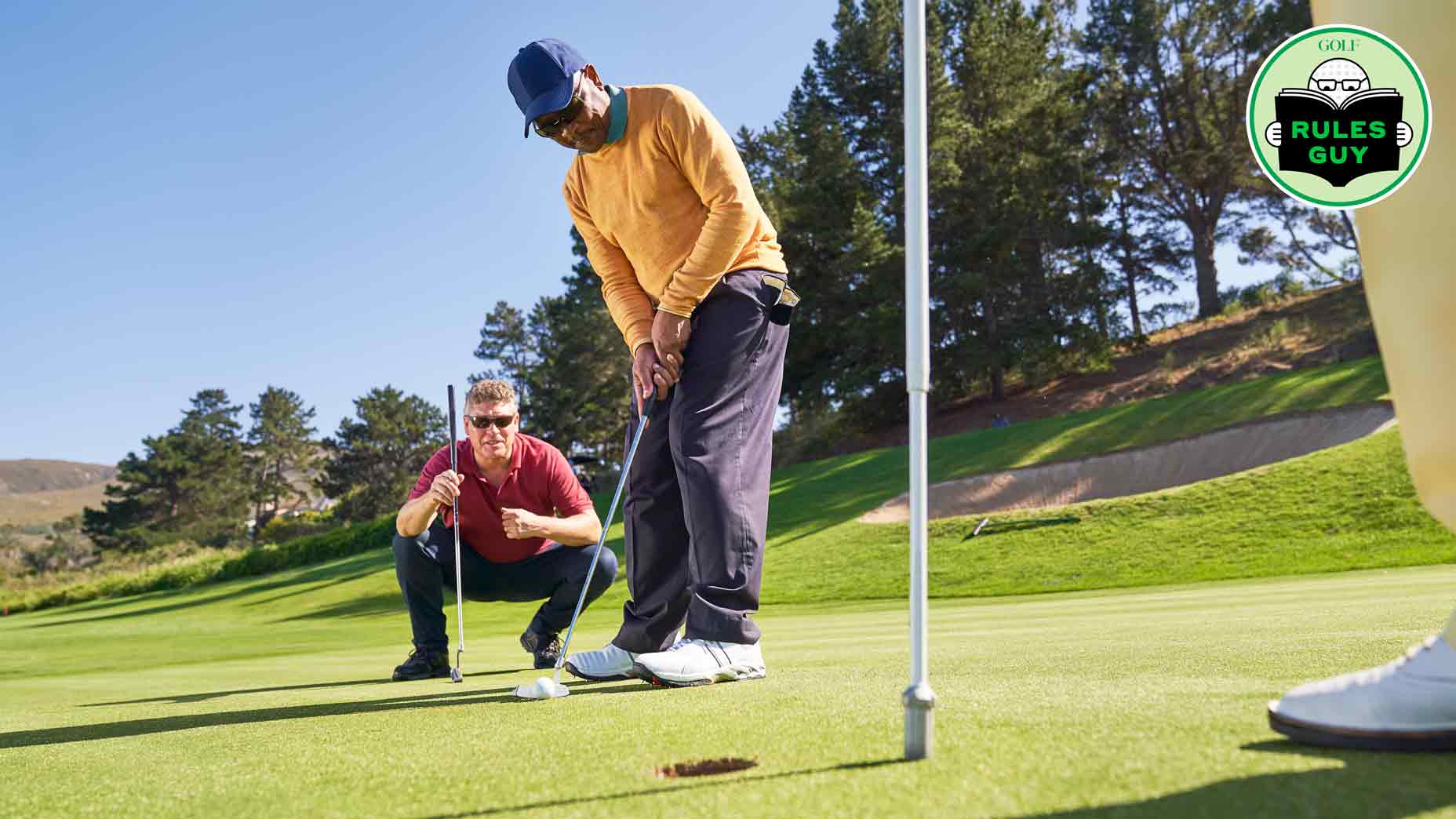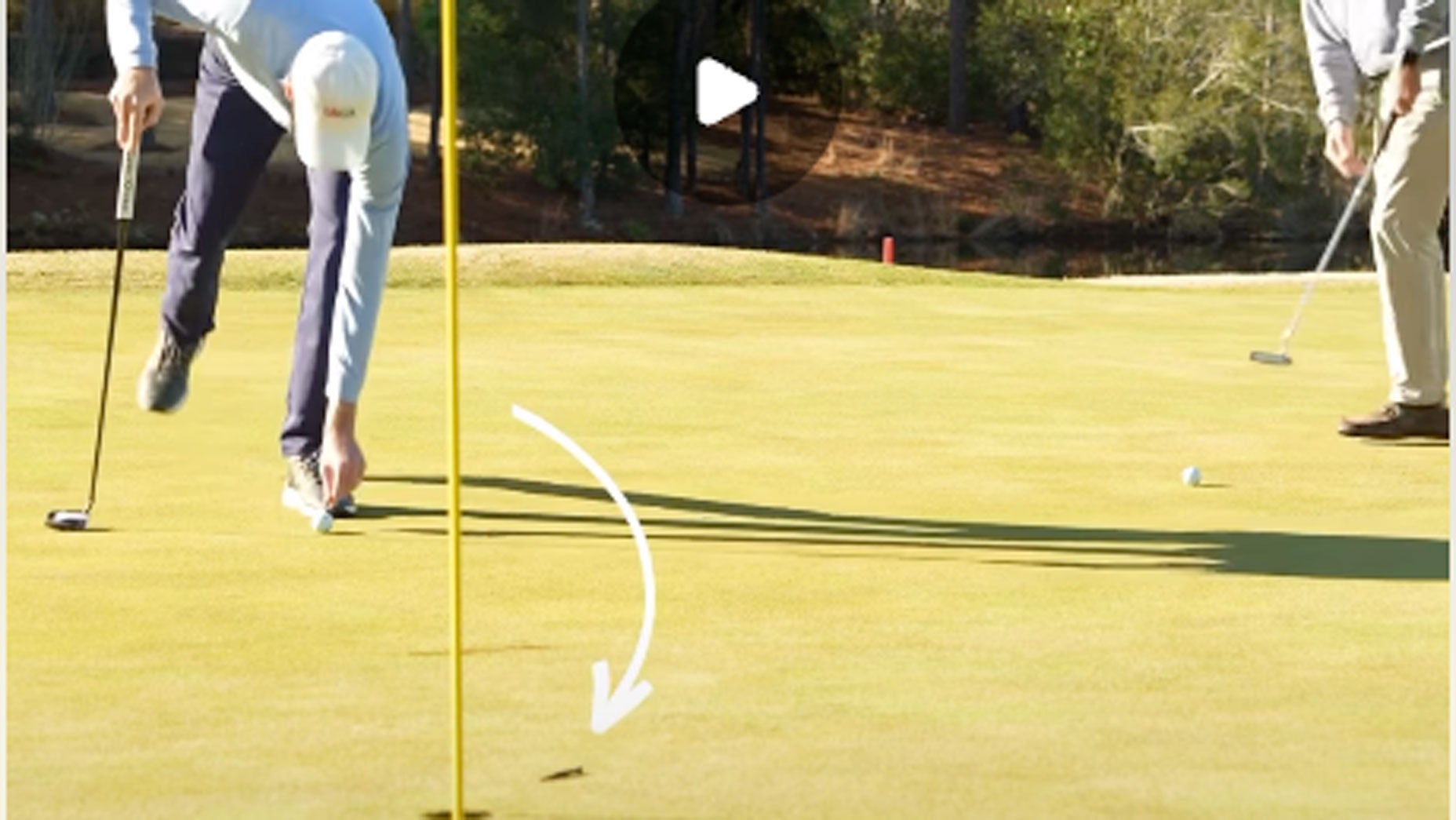 Our most-read power tip of 2025 featured this simple weight-shift drill
Our most-read power tip of 2025 featured this simple weight-shift drill
Does practicing golf at home actually work?

Most golfers do it, but does practicing at home actually help? Who better to answer that question than a group of our we asked our GOLF Top 100 Teachers for help…
John Dunigan, White Manor C.C.
Yes, as long as you have feedback
Practicing without feedback is possibly more dangerous than no practice at all.
Giving your practice some structured feedback doesn’t need to be difficult. Here’s an example: If you have a hitting net, attach a length of string vertically to serve as your target line. If you are trying to hit a draw, start the ball to the right of the string and vice versa. If you have a launch monitor, that’s even better!
In the absence of ball feedback, you will have to resort to working on your swing with video replay. But if you do, please use a tripod! Place the camera nearly on the ground, straight down the target line, and as far back away from the ball as you have room to do. 15 feet is great, but 10 will do. Camera angle is terribly important!
If you want to look at your movement, like top of backswing, then you can, for the down the target line view, center yourself in the screen and have the camera at chest high and aligned with your stance. We have long tried to infer swing plane of the club shaft from video. You will hear some noise about placing the camera at hand height, etc. But, folks, you can’t analyze swing plane from a single camera! We are looking for positions your motion moves through. For the face on view make the camera parallel to your stance. If your camera is setup just a little off, you will get some very wrong information.
If you have significant movement corrections to make, this is the best opportunity for you to make them. We can’t play, so it’s time to learn!
Brady Riggs, Woodley Lakes G.C.
Like so many things in golf it’s not the if you are practicing, it’s the how.
Regardless of whether you are at the finest facility in the world or in your own living room what and how you practice is far more important than where you practice.
The biggest key is to define what area of your game you what to focus on and in what way. For example, if you are struggling with your putting try to isolate why it’s a problem. If you are having trouble with distance control set up a few targets (coasters, water bottles, etc) at different distances on your carpet at 15’, 20’, 25’. Work on hitting putts just short, even with and just beyond the target. Assign point values to make it more interesting. If short putts are the issue use a coaster as a mock hole and putt to it from 3’, 6’ and 9’ feet to ingrain better mechanics and confidence.
This type of organized practice won’t just help you at home, it should be your new methodology when we are able to return to the game full throttle. Remember, have a plan, be specific and get to work!
ADVERTISEMENT
Tony Ruggiero, C.C. of Mobile
When the Tour Championship was cancelled, I encouraged all my players to impress upon all of my players that they should take this as a challenge to come out from this unexpected off season and break better than they were a month before. How often do we have the chance to work on things and improve without having to worry about how we play this week or next?
First and foremost I think this is a great opportunity to get your body in shape and more easily able to do the things your instructor and you would like. Every golfer should get with their instructor and trainer and find two or three exercises at home that would improve their golf swing the most. Great chance here by using small weights and bands etc to come out more flexible, stable and stronger in areas of the body needed to create a better golf swing for you.
From a mechanical standpoint I have always believed that one of the best and fastest ways to improve is make swings slow without a ball. When there is no ball we aren’t concerned with the result but more concerned with the motion or the swing. Great chance again to get with your instructor and find the one thing that you have been wanting to work on that you haven’t. Get in front of a mirror and spend some time each morning and evening doing slow full swing reps in a mirror working on your new improves swing mechanics. You will be surprised when you get the chance to put a ball down and go full speed the difference that can be seen after some good slow motion work with no ball in front of a mirror.
There’s never a bad time to work on set up stuff. Learn to make your set up from ball position to posture perfect with use of a mirror. The better you get with set up details the better you can do things later at full speed.
There’s never a bad time to work on putting. Use a putting mirror and a ruler. Get your eyes over or just inside the ball and shoulders square in mirror and learn to roll a golf ball down a yard stick. You will come out of this making more putts.
Try this 7-minute at-home Yoga routine designed specifically for golfers
Kevin Weeks, Cog Hill Golf & C.C.
Practice at home is very valuable for skill development and retention. I have several favorite exercises that I recommend students do away form the golf course.
One of my all time favorites is get a 4-foot long ruler, making sure it is strong enough to support a golf ball. Then practice hitting putts down the length of the ruler keeping the ball on the ruler until it rolls off the other end. Once that has been achieved adding a metronome to the practice setting the beat somewhere near 60 to 65 beats a minute starting your stroke on one beat making contact with the golf ball on the next beat. Lastly once that skill has been mastered go to a carpeted hallway and repeat this drill varying the distances the ball travels, making a longer stroke for longer putts and a shorter stroke for shorter putts keeping the tempo the same for 10 feet and longer putts.
Another good exercise I like to see students (provided there is sufficient room) do year round especially when they cannot get outside is to make six second golf swings, these are full swings but are made at a slow speed learning to feel your golf swing. Make a full backswing taking around three seconds to complete it, then make a slow transition and keep that speed all the way through your follow through. This will help you keep your muscles loose as well as reinforce the feel you are trying to create in your swing.
These are some of my favorite drills that can be done safely with minimal equipment and space.
To receive GOLF’s all-new newsletters, subscribe for free here.
ADVERTISEMENT





